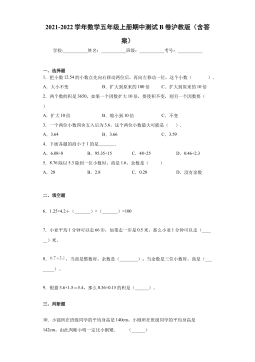波前相位调控的激光束聚焦特性研究
I摘要波前相位调节技术在理论上和实际应用中都引起了极大的关注。波前相位调节技术为光束优化和超越经典的衍射极限提供了一种方法,在激光测量分析、光存储、显微光学、光学微操纵等领域中有着广泛的应用。例如,在激光测量分析系统和显微系统中,利用相位调节可以调节焦深和焦斑大小,便于系统设计和实现;在光存储系统中,大焦深可以降低伺服系统跟踪和探测器机械定位难度,小焦斑可提高光存储密度;另外,自Ashkin开发光镊技术以来,光镊技术得到了迅速的发展,促进了很多领域快速发展,特别是在生命科学领域,吸引了大量的研究人员,如何增加光镊装置的有效性、灵活性和可控性一直是研究热点,波前相位调节技术由于其低成本、高灵活性...
相关推荐
-
【拔高测试】沪教版数学五年级下册期末总复习(含答案)VIP免费

 2024-11-19 13
2024-11-19 13 -
【基础卷】小学数学五年级下册期末小升初试卷四(沪教版,含答案)VIP免费

 2024-11-19 8
2024-11-19 8 -
期中测试B卷(试题)-2021-2022学年数学五年级上册沪教版(含答案)VIP免费

 2024-11-19 8
2024-11-19 8 -
期中测试B卷(试题)- 2021-2022学年数学五年级上册 沪教版(含答案)VIP免费

 2024-11-19 10
2024-11-19 10 -
期中测试A卷(试题)-2021-2022学年数学五年级上册沪教版(含答案)VIP免费

 2024-11-19 14
2024-11-19 14 -
期中测试A卷(试题)-2021-2022学年数学五年级上册 沪教版(含答案)VIP免费

 2024-11-19 15
2024-11-19 15 -
期中测B试卷(试题)-2021-2022学年数学五年级上册 沪教版(含答案)VIP免费

 2024-11-19 11
2024-11-19 11 -
期中测A试卷(试题)-2021-2022学年数学五年级上册沪教版(含答案)VIP免费

 2024-11-19 22
2024-11-19 22 -
【七大类型简便计算狂刷题】四下数学+答案

 2025-03-18 6
2025-03-18 6 -
【课内金句仿写每日一练】四下语文

 2025-03-18 6
2025-03-18 6
相关内容
-

期中测试A卷(试题)-2021-2022学年数学五年级上册 沪教版(含答案)
分类:中小学教育资料
时间:2024-11-19
标签:无
格式:DOCX
价格:5 积分
-

期中测B试卷(试题)-2021-2022学年数学五年级上册 沪教版(含答案)
分类:中小学教育资料
时间:2024-11-19
标签:无
格式:DOCX
价格:5 积分
-

期中测A试卷(试题)-2021-2022学年数学五年级上册沪教版(含答案)
分类:中小学教育资料
时间:2024-11-19
标签:无
格式:DOCX
价格:5 积分
-

【七大类型简便计算狂刷题】四下数学+答案
分类:中小学教育资料
时间:2025-03-18
标签:数学计算;校内数学
格式:PDF
价格:1 积分
-

【课内金句仿写每日一练】四下语文
分类:中小学教育资料
时间:2025-03-18
标签:无
格式:PDF
价格:1 积分






